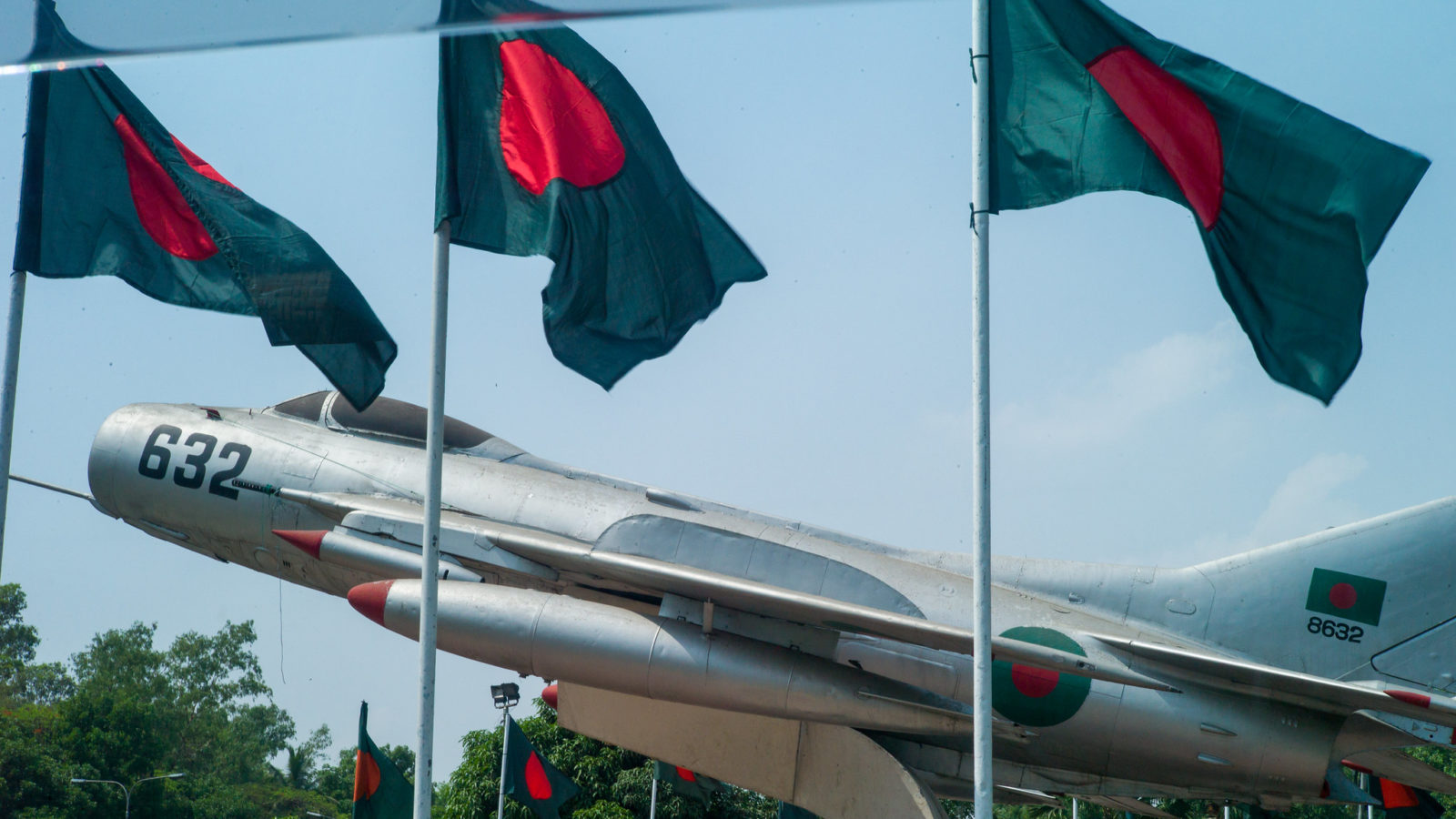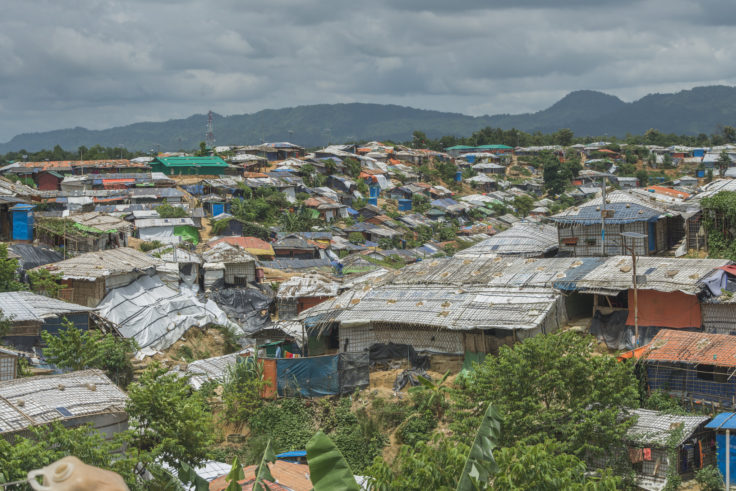
The pandemic has dominated the headlines in 2020, impacting all facets of the economy and society in Bangladesh. The government had a head start for its COVID-19 preparations, as the first case was not confirmed until March 8. However, the government failed to capitalize, with cases soon rising rapidly. The economy, particularly the garments sector, suffered a major setback before showing signs of recovery. The IMF predicted a 3.8 percent GDP growth for 2020, compared to 7.3 percent in 2019. China and India have leveraged this crisis to bolster their hegemony in the region. The Rohingya situation has seen its first major development in recent years with the first batch of refugees’ relocation to the renovated island, Bhashan Char. Human rights organizations remain critical of the safety and sustainability of the island as the government has kept them out of the loop throughout the process. Internationally, the election of President Biden bodes positively for the country in terms of trade, investment, climate, and migration. Nonetheless, Bangladesh’s continued progress into 2021 depends largely on how fast it can rein control of COVID-19 through swift vaccination efforts.
Bangladesh’s Response to COVID-19
With cases nearing half a million and deaths at nearly 7,000, Bangladesh has been among the most impacted countries globally. The figures are widely believed to be underreported; even adjusted for this, it remains a mystery how most of Dhaka’s packed slums have survived thus far largely unscathed. The government was initially slow to react to the pandemic with delayed lockdowns, insufficient testing kits, and poor monitoring of international immigrants. The subsequent economic shock forced the government to lift all kinds of lockdowns and restrictions by May despite surging cases. Even after the deployment of armed forces, the government has struggled to enforce social distancing measures as many low-income families expressed concern that they would die of hunger, if not from COVID-19. Most of Bangladesh’s 10 million informal workers, who depend on daily incomes, had their income streams cut off. To counter these impacts, the government announced 19 stimulus packages equivalent to around 3.7 percent of the GDP. In addition, the Asian Development Bank (ADB) provided USD $500 million and the World Bank provided USD $1 billion worth of support.
The Economy
The Ready-Made Garments (RMG) Sector, a lifeline of the country’s economy, was hit hard by the pandemic, with losses of orders worth over USD $6 billion and 1 million workers (mostly women) being laid off. International retailers such as H&M, GAP, Walmart, Primark have been accused of canceling orders for clothes that have already been produced. Subsequent protests and international coverage had forced many of these retailers to honor their existing agreements. In recent months, the sector has started to recover as factories have reported the resumption of 80-90 percent of the canceled orders, as well as new orders which are around 60 percent of the usual monthly averages. Many factories have adapted their portfolio to produce and export masks, PPEs, and other medical equipment.
Foreign remittances, another key lifeline of the country’s economy, had initially expected a shock at the start of the pandemic. Bangladesh is among the top 10 highest remittance recipient countries globally, with over 8 million Bangladeshis living abroad. However, remittance inflow has shown a surprisingly sustained recovery as the World Bank projects an eight percent growth in 2020 to USD $20 billion, while globally, it expects a seven percent decline. The rise has been attributed to expatriates sending more money back to their families to offset the economic shock from the pandemic and floods. In addition, the government’s incentives and a disruption in the illegal remittance transfer mediums due to the pandemic have also forced people to take legal channels.
As the country gradually recovers from the impact of the pandemic, the upcoming concern remains the procurement and distribution of vaccines. The vaccine developed by Oxford-AstraZeneca is the most suitable option for Bangladesh, given its low requirements on freezing temperature. Bangladesh will receive 30 million doses of the vaccine from India’s Serum Institute, and a further 68 million doses from the Gavi Vaccine Alliance which covers around 30 percent of the population. While there are concerns about equitable distribution of the vaccine, Bangladesh’s strength lies in its vaccine coverage, which is the highest globally, and its low vaccine hesitancy—most Bangladeshis are in favor of vaccination.
Rohingya Refugee Crisis
The Rohingya refugee crisis remains a major issue for Bangladesh as distrust amongst the local population has magnified due to the impacts of COVID-19. The pandemic has shrunk economic opportunities for the Cox’s Bazar population, which has witnessed the Rohingya receiving food and aid from humanitarian agencies. Consequently, many locals feel marginalized and fear that the Rohingya might be taking what they ought to receive. Monitoring the Rohingya has also become increasingly difficult with the rise in internal clashes (and deaths). After multiple delays and hesitation from within the Rohingya community, the government begun the relocation of Rohingyas from Cox’s Bazar to Bhashan Char Island, which can accommodate 100,000 Rohingyas. While the government has claimed the island to have been equipped with all required amenities, humanitarian organizations have opposed the transfer citing concerns over food, medical supplies, cyclones, and flood.

Elsewhere, talks between Bangladesh and Myanmar have stalled, given Myanmar’s elections and the pandemic. While these talks are expected to resume in 2021—through a tripartite mechanism involving China—there may not be much hope, given Myanmar’s history of reneging on its repatriation commitments. Repatriation efforts have already failed in 2018 and 2019 due to the Rohingya’s lack of trust in the Myanmar government. In addition, the failure of regional neighbors such as China and India to enforce any punitive measures has allowed Myanmar to break their promises without any repercussions.
Bilateral Affairs and Foreign Policy
Bangladesh’s foreign policy has been dominated in recent years by its interactions with the regional superpowers China and India. In recent decades, both countries have expanded their economic partnerships (often vying with each other for influence) with Bangladesh, including through the record-breaking provision of aid and loans. Diplomatically, the relationship had tapered in recent years. This was particularly the case as both countries refused to force Myanmar into Rohingya repatriation, and India introduced its National Register of Citizens and Citizenship Amendment Act, which together could force an influx of refugees from India. Combined with the existing Rohingya refugee crisis, this would place a major burden on Bangladesh.
The pandemic changed the arc of this tide. Following its conflict with India at Ladakh, China offered tariff exemption for 97 percent of its imports from Bangladesh. China is by far Bangladesh’s largest trading partner. All nine Chinese funded infrastructure projects worth USD $71 billion have also resumed after a break during the pandemic. In addition, China has sent medical teams, testing kits, and protective equipment over multiple batches to help Bangladesh tackle COVID-19.
India’s foreign secretary made a sudden, abrupt visit to Dhaka in August, against the backdrop of China’s activities in the region. One of the outcomes of the visit has been India verbally committing to granting Bangladesh priority access to the Oxford vaccine. The visit overall carried more symbolic value as India looks to ease any tensions with Bangladesh. Projects involving India’s credit line have gained momentum in recent months. India has also appointed a new High Commissioner to Bangladesh, Vikram Doraiswami, who is keen to strengthen the relationship and has been very upbeat and active with his media presence and initiatives in just two months. There are as yet no solutions on the horizon on the two most critical issues for the two neighbors—the Teesta river dispute and the continued killing of Bangladeshis by India’s Border Security Force (BSF) at the borders.
U.S. Election and Expectations
Bangladeshis have met Joe Biden’s election as President of the United States with relief and hope. This includes Bangladeshi Foreign Minister Dr. Abdul Momen, who called the U.S. election a “blessing”. The United States is the largest export destination for Bangladeshi products, worth around USD $ 6.7 billion in 2019. The Biden administration is expected to better adhere to the World Trade Organization (WTO)’s regulations. This is important for Bangladesh, as stability in global trade and adherence to international rules create more favorable trade conditions for the country. The United States’ migration policy is also expected to be more liberal under the new administration, which provides opportunities for Bangladesh to better leverage its U.S. diaspora. The United States is among the top ten countries for Bangladeshi emigrants, with a current stock of over 200,00 people. In addition, Bangladesh expects better cooperation on climate change and investment in the upcoming years.
Domestic Politics & Governance
The domestic political scenario in Bangladesh remained relatively quiet this year, with the main opposition party, the Bangladesh Nationalist Party (BNP), effectively subdued. While the country has continued to rank poorly in corruption and human rights indices, polls have suggested an increase in approval for the government. This can be attributed to a sustained improvement in economic indicators and a lack of a potential government alternative. An alarming rise in rape cases has been a major concern domestically, with around four cases reported every day. In response to mass protests, the government introduced death penalty for rape convicts. The efficacy of such a measure remains unclear as the primary causes are rooted in a culture of impunity, misogyny, and victim-blaming.
2020 has been an unprecedentedly difficult year with the pandemic ravaging all facets of our society and economy. However, much like the global population, the Bangladeshi people have shown resilience in adapting to the new normal and finding ways to persist and survive. While the pandemic has significantly hamstrung Bangladesh’s development progress, 2021 provides an opportunity to build on resilience to chart a more coordinated growth strategy that addresses corruption, upholds human rights, and ensures sustainability.
Editor’s Note: SAV contributors from across the subcontinent recap the most significant political, economic, and strategic developments in South Asia in 2020 and analyze what opportunities and challenges lie ahead for each country in 2021. Read the full series here.
***
Image 1: Tor Andreas Torhaug via Flickr
Image 2: EU Civil Protection and Humanitarian Aid via Flickr
